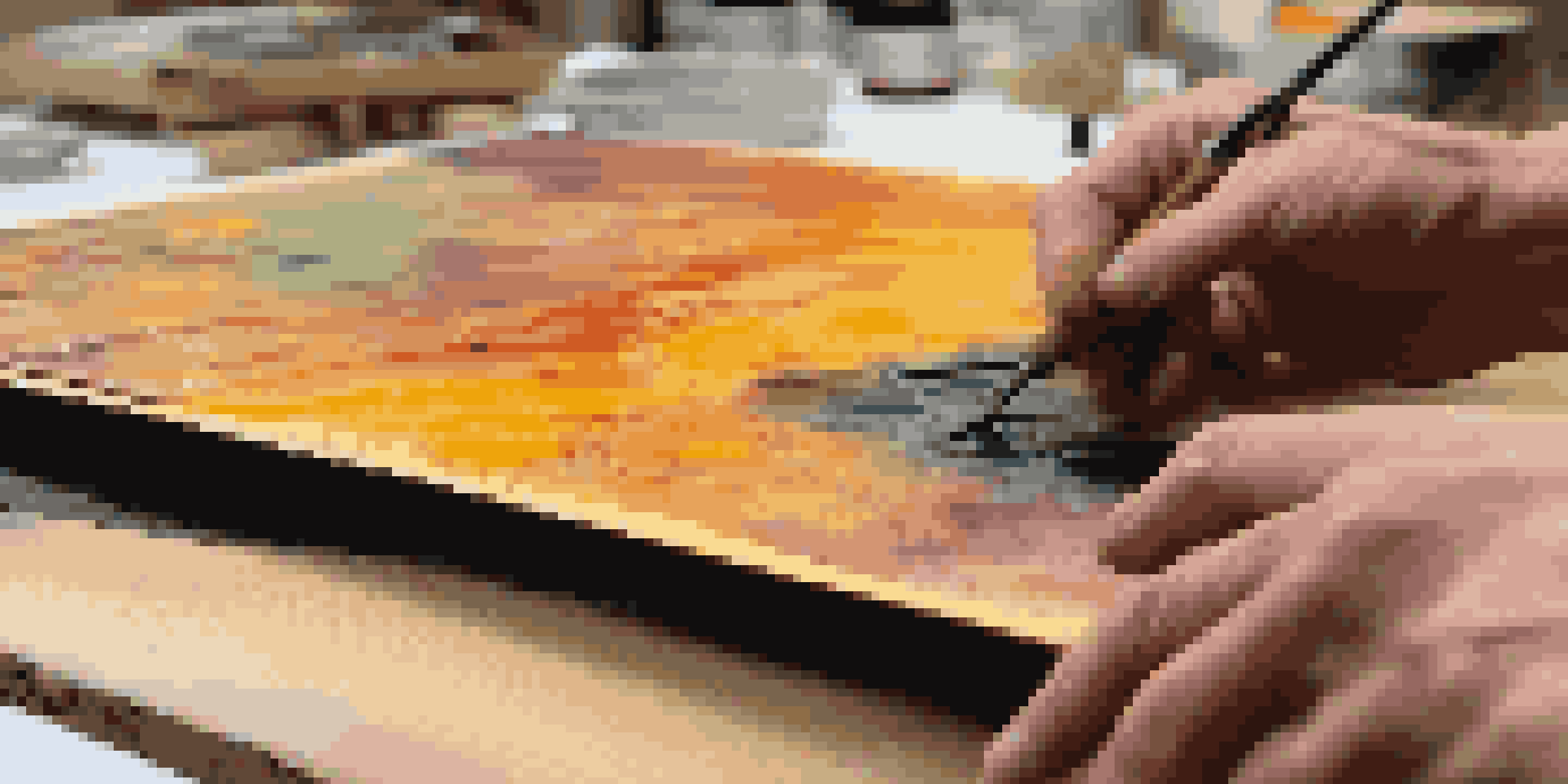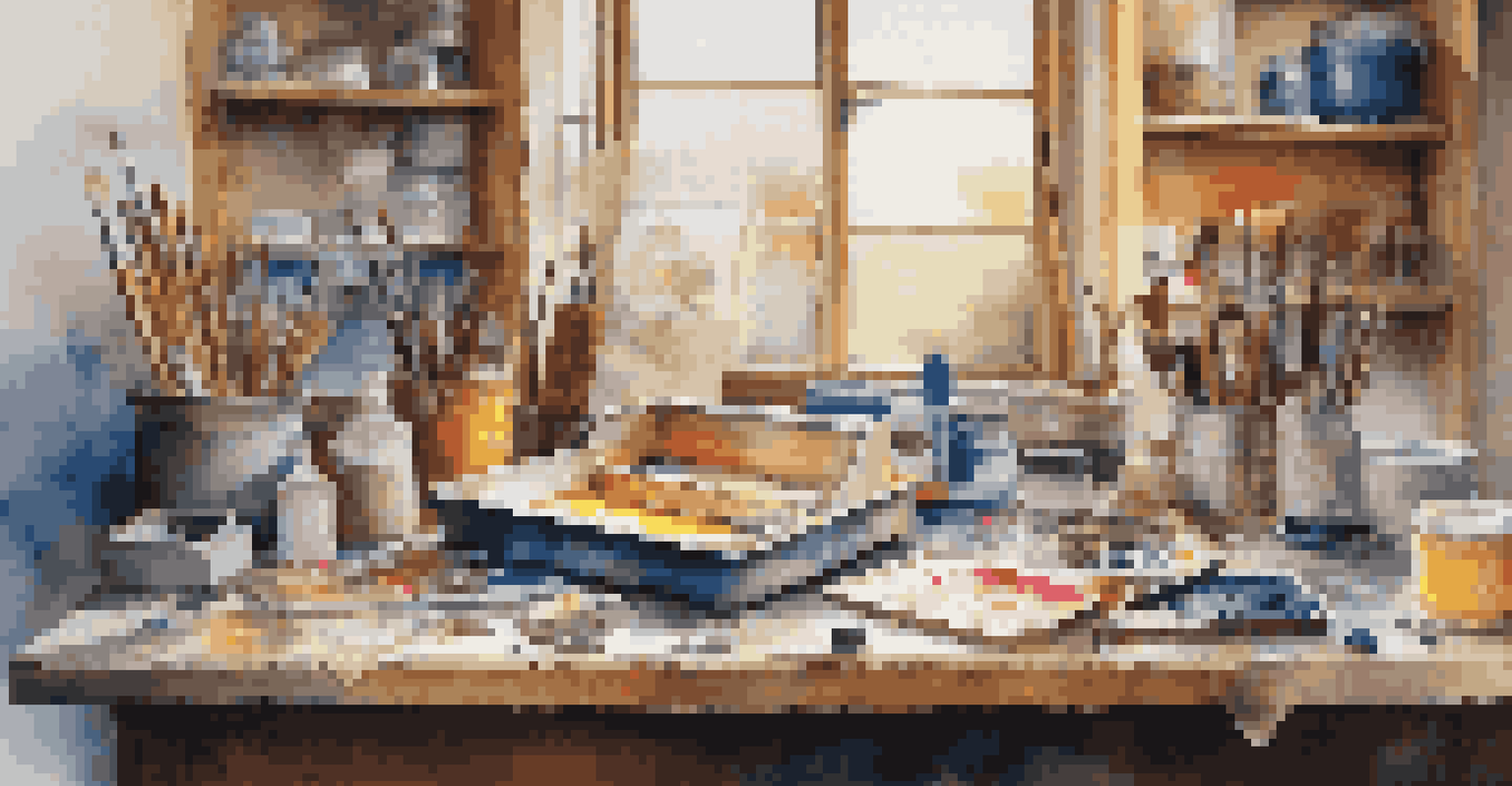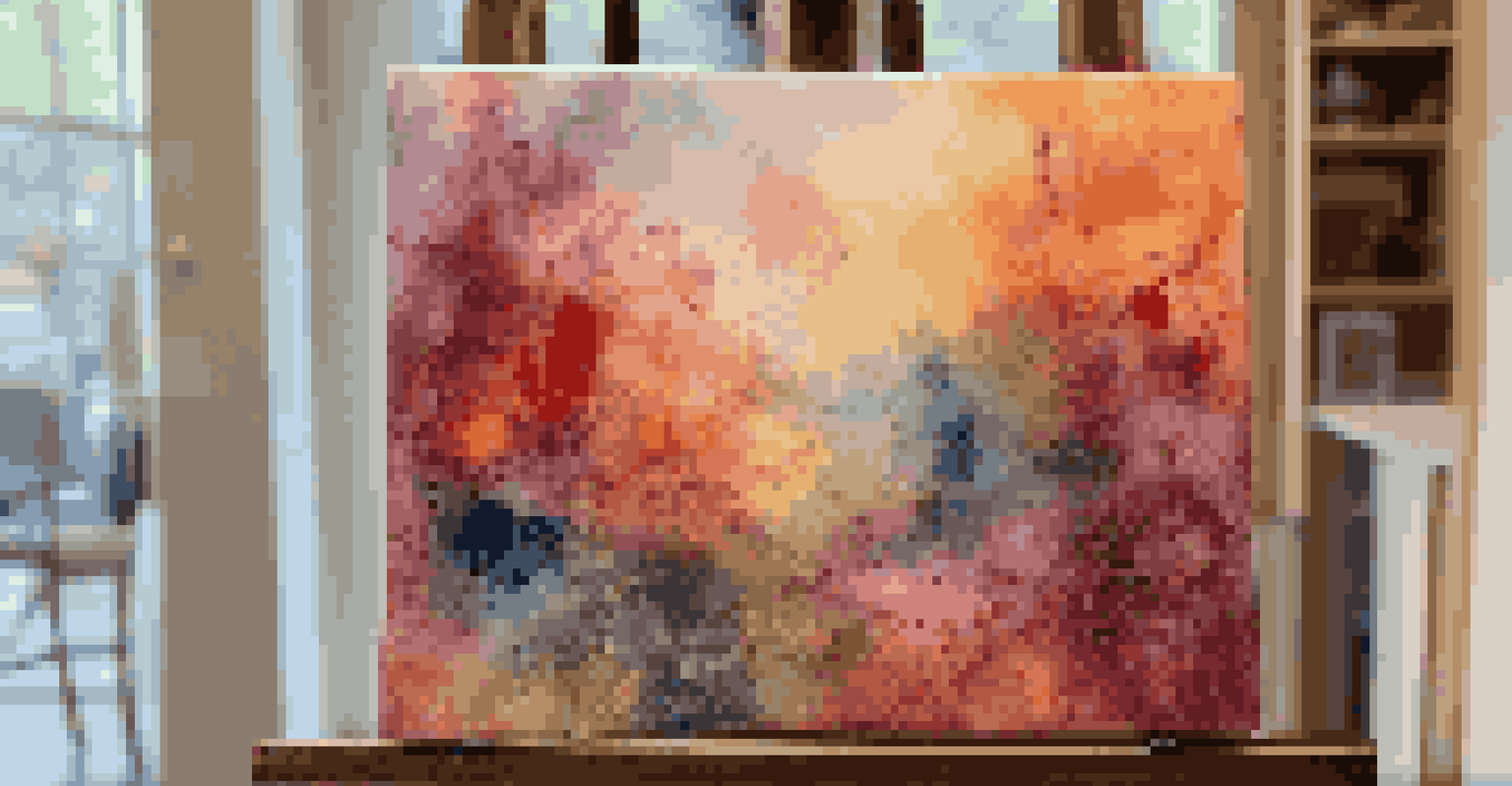Exploring the World of Encaustic Painting: Techniques and Tools

What is Encaustic Painting and Its History?
Encaustic painting is a fascinating art form that involves using heated beeswax mixed with colored pigments. This ancient technique dates back to the Greeks, who used it for decorative purposes and to preserve their artwork. The word 'encaustic' comes from the Greek word 'enkaustikos,' meaning 'to burn in,' which refers to the method of applying the wax and then fusing it with heat.
Art is not freedom from discipline, but disciplined freedom.
Throughout history, encaustic painting saw a resurgence during the Renaissance and again in the modern art movement. Artists like Jasper Johns and Diego Rivera adopted this technique, showcasing its versatility and depth. The ability to create textured layers and vibrant colors makes encaustic painting a unique medium that captivates contemporary artists.
Whether you’re a seasoned artist or a beginner, understanding the history of encaustic painting can enhance your appreciation for this unique art form. By learning about its roots, you can better understand how it has evolved and how it can be applied in today's artistic landscape.
Essential Tools for Encaustic Painting
To get started with encaustic painting, you'll need a few essential tools. First and foremost, a heat source is crucial; this can be a heat gun or an electric griddle. These tools allow you to melt the beeswax and keep it at the right temperature for painting. Additionally, you'll need a palette for mixing colors and brushes specifically designed for use with hot wax.

Other handy tools include metal spatulas for layering wax and scraping, as well as a variety of containers for holding your wax. Don't forget to have a sturdy surface to work on, as encaustic painting can be messy. Having the right tools on hand makes the process smoother and more enjoyable.
Encaustic Painting's Rich History
Encaustic painting, with origins in ancient Greece, has evolved through various artistic movements, captivating artists with its unique texture and vibrant colors.
As you gather your supplies, consider investing in high-quality materials, as they can significantly impact your results. While it might be tempting to cut corners, using good-quality beeswax and pigments will enhance the vibrancy and longevity of your artwork.
Basic Techniques in Encaustic Painting
Encaustic painting techniques are as diverse as the artists who practice them. The most fundamental technique involves applying heated wax to a surface, allowing you to build up layers and create depth. You can manipulate the wax with brushes, palette knives, or even your fingers, giving you a wide range of textural possibilities.
The painter tries to master the art of painting, to create something that is more than just a reflection of reality; it is a reflection of the soul.
Another popular technique is 'fusing,' where you use heat to melt the layers of wax together, creating a smooth, cohesive surface. This is crucial for ensuring that your colors blend well and adhere properly. Experimenting with different fusing methods can lead to unique effects and finishes.
Don't be afraid to explore mixed media approaches! Incorporating materials like paper, fabric, or even photographs into your encaustic work can add complexity and interest. The beauty of encaustic painting lies in its versatility, allowing you to combine various techniques to develop your distinctive style.
Color Mixing in Encaustic Painting
Mixing colors in encaustic painting can be a delightful and creative process. Since you're working with wax, you can blend different colored waxes on your palette or directly on your canvas. The key is to remember that the colors will appear slightly different when they cool, so it's a good idea to test your mixtures before committing to a larger area.
Another fun aspect of encaustic painting is the ability to create transparent layers. By applying thin coats of colored wax over a light background, you can achieve beautiful, luminous effects. This transparency allows for layering and depth, giving your artwork a dynamic quality.
Essential Tools for Beginners
To successfully create encaustic art, artists need specific tools like a heat source, brushes, and quality materials to enhance their creative process.
As you practice color mixing, keep in mind the temperature of your wax. If it gets too hot, the colors can become muddy or lose their vibrancy. Finding the right balance will help you achieve the rich, bold hues that encaustic painting is known for.
Creating Texture with Encaustic Techniques
One of the most exciting aspects of encaustic painting is the ability to create texture. By manipulating the hot wax, you can create a variety of effects, from smooth surfaces to rugged peaks. Techniques like using a brush, comb, or even your fingers allow for endless creativity in textural development.
You can also experiment with embedding objects into the wax, such as fabric, paper, or natural materials. This adds an additional layer of interest and complexity to your artwork. The beauty of encaustic painting is that it invites experimentation, so don’t hesitate to try different tools and materials to see what unique textures you can create.
Remember, the texture can also affect the way light interacts with your painting, adding a dynamic quality that changes with the viewer's perspective. By understanding how to manipulate texture, you can elevate your encaustic paintings to new heights.
Safety Tips for Encaustic Painting
While encaustic painting can be a rewarding experience, it’s essential to prioritize safety. Working with heated wax poses risks, so always ensure that you have proper ventilation in your workspace. This prevents the accumulation of fumes that can occur when melting wax.
Additionally, be mindful of burns when handling hot tools and the wax itself. Using gloves and protective eyewear can help minimize these risks. It's also wise to have a fire extinguisher nearby, just in case, as wax is flammable.
Experimenting with Techniques
Exploring diverse techniques, such as color mixing and texture creation, allows artists to develop their distinctive style and push the boundaries of encaustic painting.
By taking these precautions, you can create a safe environment that allows you to focus on your artistic expression without worry. Safety should never be an afterthought, especially in a creative space.
Exploring Encaustic Painting Styles and Inspirations
Encaustic painting is an art form that invites personal expression and creativity. Many artists draw inspiration from nature, using colors and textures that reflect the world around them. Others may explore abstract forms or even mixed media, blending encaustic techniques with photography or collage to create stunning visual narratives.
As you develop your style, consider looking at the work of established encaustic artists for inspiration. Their unique approaches can spark new ideas and encourage experimentation with techniques and themes. Joining local or online encaustic communities can also provide support and motivation.

Ultimately, your artistic journey is unique to you. Whether you’re replicating traditional techniques or forging your own path, the world of encaustic painting offers endless possibilities for exploration and growth.